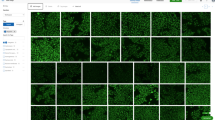Abstract
In the work presented in this paper, an Interval Arithmetic Perceptron (IAP) is used to detect the region in the input space to which an uncertainty decision should be appropriately associated. This region may be originated both by sub-regions which are not represented in the training set, and by subregions where the probabilities of the two classes are very similar. To train the IAP, an algorithm will be presented which in particular is able detect the two certainty regions and the uncertainty one From the interval weights thus obtained, a confidence interval of the probability will also be evaluated. The algorithm has been used for studying a simple artificial problem and two real-world appli-cations, the Iris and Breast Cancer databases. Regarding the latter application in particular, a statistical analysis of the results is presented, together with a discussion of the possible alternative classifications of the patterns attributed to the uncertainty region.
Similar content being viewed by others
Author information
Authors and Affiliations
Rights and permissions
About this article
Cite this article
Drago, G., Ridella, S. Possibility and Necessity Pattern Classification using an Interval Arithmetic Perceptron. NCA 8, 40–52 (1999). https://doi.org/10.1007/s005210050006
Published:
Issue Date:
DOI: https://doi.org/10.1007/s005210050006




